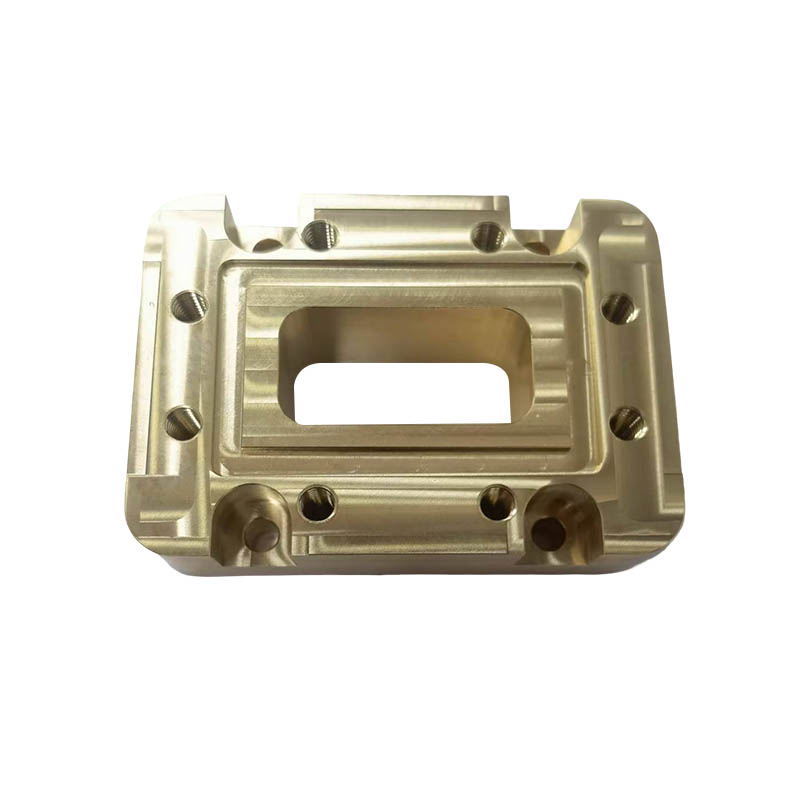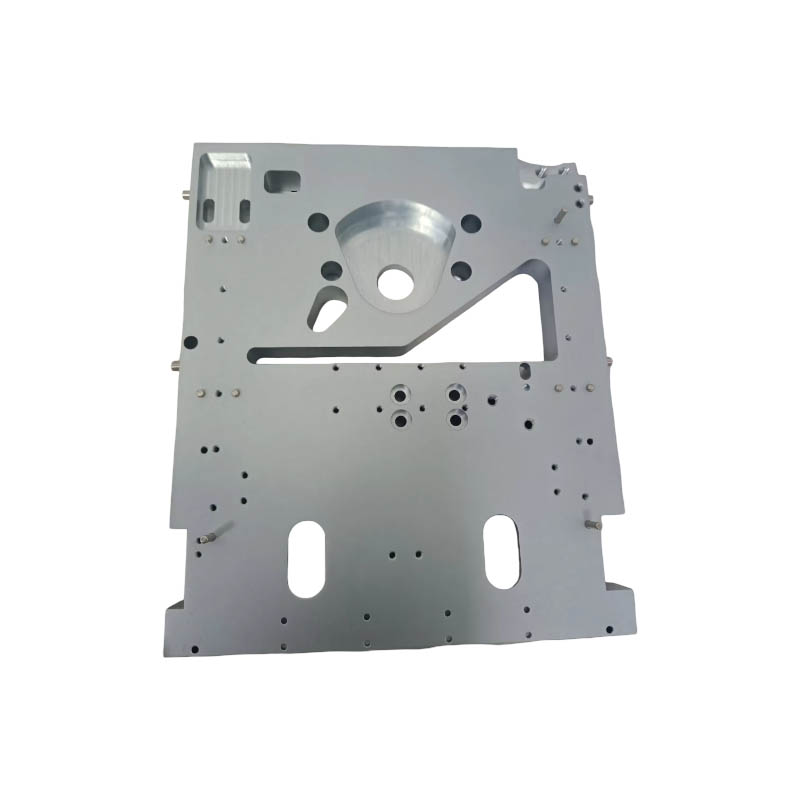How to avoid contamination during the processing of medical products?
Release Time : 2025-11-03
The cleanliness requirements for medical product processing far exceed those of general industrial manufacturing. Even the smallest contaminants—whether metal scraps, grease residue, dust particles, microorganisms, or chemical solvents—can trigger inflammation, rejection reactions, or even serious infections when implanted in the human body or exposed to bodily fluids. Therefore, avoiding contamination is not only crucial for quality control but also a core principle concerning patient safety. Achieving this goal relies on a comprehensive aseptic system encompassing environment, materials, processes, and personnel management.
The processing environment for medical products is the first line of defense against contamination. The production of precision medical components typically takes place in environments that meet cleanroom standards. Air is continuously circulated through a high-efficiency filtration system to effectively remove suspended particles. The indoor air pressure is slightly higher than the outside, creating a positive pressure environment to prevent the infiltration of unfiltered outside air. Temperature and humidity are strictly controlled within suitable ranges to prevent condensation from breeding bacteria or affecting material performance. Floors, walls, and equipment surfaces are made of easy-to-clean, dust-free materials and are regularly disinfected and wiped down to ensure the entire space remains highly clean.
The selection and pretreatment of medical product materials are of paramount importance. Metals used in medical applications, such as titanium alloys, stainless steel, or cobalt-chromium alloys, undergo rigorous cleaning and inspection before entering the processing area to ensure the surface is free of oxide layers, oil, or impurities acquired during transportation. Non-metallic materials, such as medical-grade plastics or ceramics, must also be biocompatible and undergo deionized water rinsing or plasma cleaning before use to remove residual mold release agents or additives from the molding process. All raw materials are sealed in packaging during storage and handling to prevent exposure to open environments.
The processing technology for medical products is designed to be "clean-friendly." CNC machine tools are equipped with fully enclosed protective covers to prevent the splashing of cutting fluid and chips. The coolant uses a low-toxicity, biodegradable formula and is circulated through a multi-stage filtration system, with regular replacement to maintain cleanliness. Dry machining or micro-lubrication technologies are used in some processes to reduce the risk of contamination from liquid media. Toolpaths are optimized to minimize idle travel and repeated cutting, reducing the likelihood of generating fine metal powder. For unavoidable chips, automatic chip removal devices and vacuum dust collection systems are provided to promptly clean the processing area.
Human operation is one of the most uncontrollable factors among potential sources of contamination. Personnel entering the cleanroom must wear specialized cleanroom suits, masks, gloves, and shoe covers, with their hair completely covered to minimize the release of dander, hair, and respiratory particles. All movements must be standardized and orderly, avoiding vigorous movement or rapid handling of items that could cause airflow disturbance. Tools and fixtures must be cleaned and disinfected before and after use, and stored in designated areas to prevent cross-contamination. Automated loading and unloading and robot-assisted systems are widely used to reduce the chance of direct human contact with parts.
The post-processing of medical products is equally rigorous. Finished parts immediately undergo a specialized cleaning process using ultrasonic cleaners with deionized water and medical-grade cleaning agents to thoroughly remove residual coolant, metal particles, and fingerprints/grease. After cleaning, they are dried at high temperature or with clean compressed air, and then visually or microscopically inspected in a clean bench. Qualified parts are sealed in sterile packaging materials, and some products require final sterilization treatment, such as ethylene oxide fumigation or gamma irradiation, to ensure they are sterile upon leaving the factory.
A comprehensive traceability and monitoring system for medical products is implemented throughout the entire process. Each batch of products is uniquely numbered, recording the materials used, processing equipment, operators, and environmental parameters, allowing for rapid traceability in case of problems. Airborne particle counters, microbial samplers, and other equipment monitor environmental cleanliness in real time to ensure consistent compliance with standards.
Ultimately, contamination prevention in the processing of medical products is a systematic project that integrates cleanliness principles into every detail, from the macro-environment to micro-operations, building an unbreakable safety barrier to safeguard health and life.
The processing environment for medical products is the first line of defense against contamination. The production of precision medical components typically takes place in environments that meet cleanroom standards. Air is continuously circulated through a high-efficiency filtration system to effectively remove suspended particles. The indoor air pressure is slightly higher than the outside, creating a positive pressure environment to prevent the infiltration of unfiltered outside air. Temperature and humidity are strictly controlled within suitable ranges to prevent condensation from breeding bacteria or affecting material performance. Floors, walls, and equipment surfaces are made of easy-to-clean, dust-free materials and are regularly disinfected and wiped down to ensure the entire space remains highly clean.
The selection and pretreatment of medical product materials are of paramount importance. Metals used in medical applications, such as titanium alloys, stainless steel, or cobalt-chromium alloys, undergo rigorous cleaning and inspection before entering the processing area to ensure the surface is free of oxide layers, oil, or impurities acquired during transportation. Non-metallic materials, such as medical-grade plastics or ceramics, must also be biocompatible and undergo deionized water rinsing or plasma cleaning before use to remove residual mold release agents or additives from the molding process. All raw materials are sealed in packaging during storage and handling to prevent exposure to open environments.
The processing technology for medical products is designed to be "clean-friendly." CNC machine tools are equipped with fully enclosed protective covers to prevent the splashing of cutting fluid and chips. The coolant uses a low-toxicity, biodegradable formula and is circulated through a multi-stage filtration system, with regular replacement to maintain cleanliness. Dry machining or micro-lubrication technologies are used in some processes to reduce the risk of contamination from liquid media. Toolpaths are optimized to minimize idle travel and repeated cutting, reducing the likelihood of generating fine metal powder. For unavoidable chips, automatic chip removal devices and vacuum dust collection systems are provided to promptly clean the processing area.
Human operation is one of the most uncontrollable factors among potential sources of contamination. Personnel entering the cleanroom must wear specialized cleanroom suits, masks, gloves, and shoe covers, with their hair completely covered to minimize the release of dander, hair, and respiratory particles. All movements must be standardized and orderly, avoiding vigorous movement or rapid handling of items that could cause airflow disturbance. Tools and fixtures must be cleaned and disinfected before and after use, and stored in designated areas to prevent cross-contamination. Automated loading and unloading and robot-assisted systems are widely used to reduce the chance of direct human contact with parts.
The post-processing of medical products is equally rigorous. Finished parts immediately undergo a specialized cleaning process using ultrasonic cleaners with deionized water and medical-grade cleaning agents to thoroughly remove residual coolant, metal particles, and fingerprints/grease. After cleaning, they are dried at high temperature or with clean compressed air, and then visually or microscopically inspected in a clean bench. Qualified parts are sealed in sterile packaging materials, and some products require final sterilization treatment, such as ethylene oxide fumigation or gamma irradiation, to ensure they are sterile upon leaving the factory.
A comprehensive traceability and monitoring system for medical products is implemented throughout the entire process. Each batch of products is uniquely numbered, recording the materials used, processing equipment, operators, and environmental parameters, allowing for rapid traceability in case of problems. Airborne particle counters, microbial samplers, and other equipment monitor environmental cleanliness in real time to ensure consistent compliance with standards.
Ultimately, contamination prevention in the processing of medical products is a systematic project that integrates cleanliness principles into every detail, from the macro-environment to micro-operations, building an unbreakable safety barrier to safeguard health and life.







